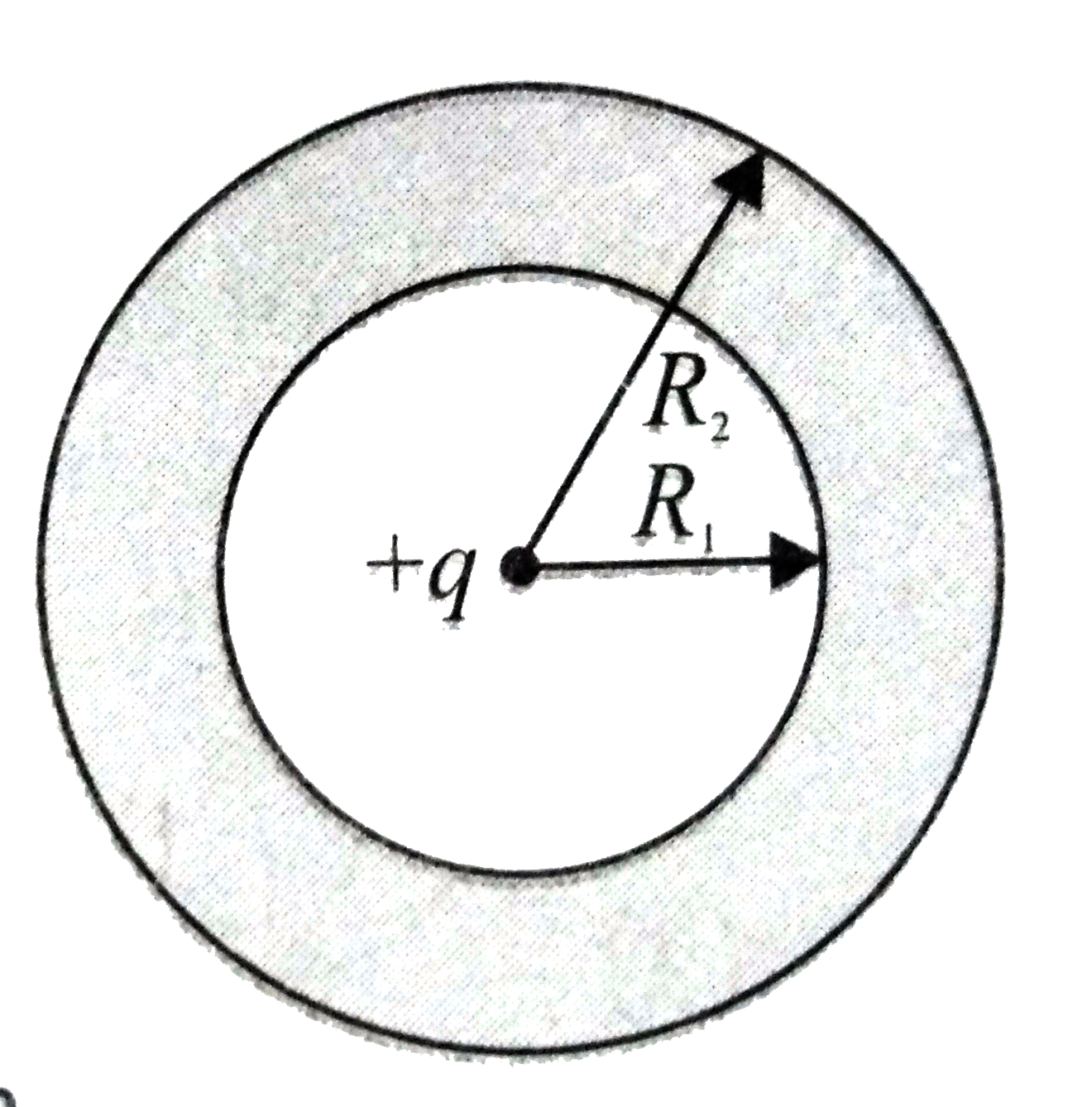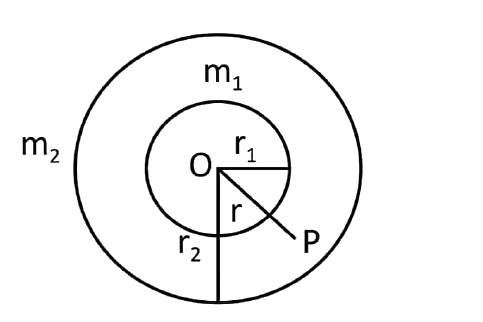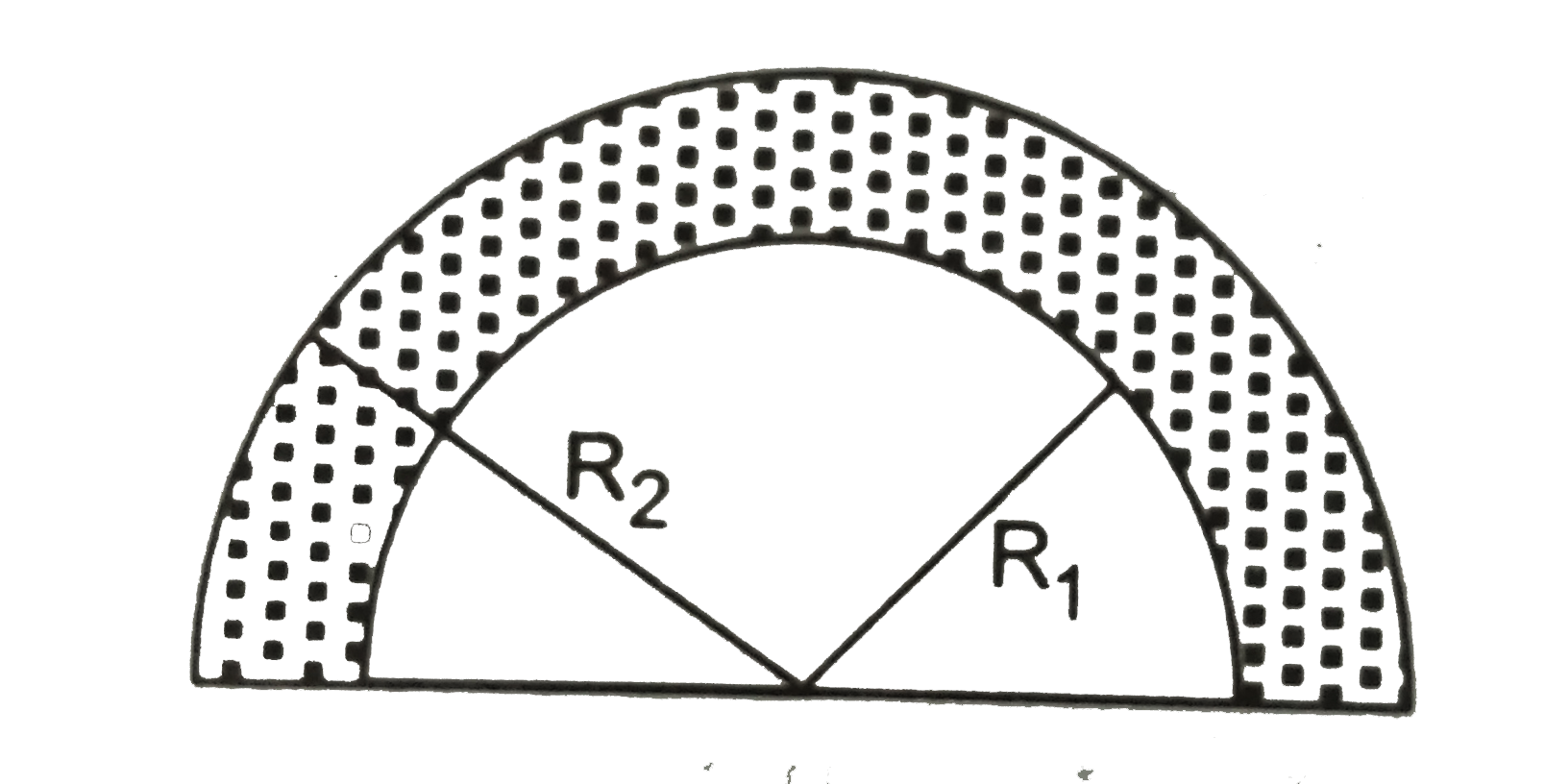A chance Q placed at thee center of a metallic spherical shell with inner and outer radii R1andR2 respectively . The normal component of the electric field at any point on the Gaussian surface with radius between R1andR2 will be
Zero
Q4πR21
Q4πR22
Q4π(R1−R2)2
The correct Answer is:A
To solve the problem, we need to analyze the situation involving a charge Q placed at the center of a metallic spherical shell with inner radius R1 and outer radius R2. We want to determine the normal component of the electric field at any point on a Gaussian surface with a radius between R1 and R2.
1. Understanding the Setup:
- We have a charge Q located at the center of a metallic spherical shell.
- The shell has an inner radius R1 and an outer radius R2.
- We need to consider a Gaussian surface that lies between R1 and R2.
Hint: Visualize the charge and the spherical shell to understand the electric field distribution.
2. Properties of Conductors:
- In electrostatics, the electric field inside a conductor in electrostatic equilibrium is zero.
- Therefore, any electric field lines from the charge Q will induce charges on the inner surface of the shell.
Hint: Recall that electric field inside a conductor is zero when in electrostatic equilibrium.
3. Induced Charges:
- The positive charge Q at the center will induce a negative charge of −Q on the inner surface of the shell (at radius R1).
- This will leave a positive charge of +Q on the outer surface of the shell (at radius R2).
Hint: Remember that the total charge on a conductor must remain constant and that induced charges respond to the electric field.
4. Applying Gauss's Law:
- For a Gaussian surface between R1 and R2, the enclosed charge is zero because the inner surface has −Q and the outer surface has +Q but is outside our Gaussian surface.
- According to Gauss's Law, the electric flux through the Gaussian surface is given by:
ΦE=Qenclosedϵ0
- Since Qenclosed=0, we have:
ΦE=0
Hint: Use Gauss's Law to relate electric flux to enclosed charge.
5. Conclusion:
- Since the electric flux is zero, the electric field E at any point on the Gaussian surface must also be zero.
- Therefore, the normal component of the electric field at any point on the Gaussian surface with radius between R1 and R2 is:
E=0
Final Answer: The normal component of the electric field is 0.
- We have a charge Q located at the center of a metallic spherical shell.
- The shell has an inner radius R1 and an outer radius R2.
- We need to consider a Gaussian surface that lies between R1 and R2.
- In electrostatics, the electric field inside a conductor in electrostatic equilibrium is zero.
- Therefore, any electric field lines from the charge Q will induce charges on the inner surface of the shell.
- The positive charge Q at the center will induce a negative charge of −Q on the inner surface of the shell (at radius R1).
- This will leave a positive charge of +Q on the outer surface of the shell (at radius R2).
- For a Gaussian surface between R1 and R2, the enclosed charge is zero because the inner surface has −Q and the outer surface has +Q but is outside our Gaussian surface.
- According to Gauss's Law, the electric flux through the Gaussian surface is given by:
ΦE=Qenclosedϵ0
- Since Qenclosed=0, we have:
ΦE=0
- Since the electric flux is zero, the electric field E at any point on the Gaussian surface must also be zero.
- Therefore, the normal component of the electric field at any point on the Gaussian surface with radius between R1 and R2 is:
E=0
Similar Questions
A metallic spherical shell has an inner radius R1 and outer radius R2. A charge is placed at the centre of the spherical cavity. The surface charge density on the inner surface is

View SolutionThree concentric conducting spherical shells of radii R, R2 and 3R carry charges Q,-2Q and 3Q, respectively compute the electric field at r=52R

View SolutionA point charge +q is placed at the centre of a conducting spherical shell of inner radius a and outer radius b. Find the charge appearing on the inner and outer surface of the shell.
View SolutionTwo concentric spherical shells of masses and radii m1,r1andm2,r2 respectively are as shown. The gravitational field intensity at point P is

View SolutionA point charge Q is placed inside a conducting spherical shell of inner radius 3R and outer radius 5R at a distance R from the centre of the shell. The electric potential at the centre of the shell will be
View SolutionA point charge Q is located at the centre of a hollow spherical conductor having inner radius as R1 and outer radius R2. The conductor being uncharged initially. The potential at the inner surface will be
View SolutionA point charge q is placed at a distance of r from the centre O of an uncharged spherical shell of inner radius R and outer radius 2R.The distance r<R.The electric potential at the centre of the shell will be

View SolutionA point charge q is placed at a distance of r from the centre O of an uncharged spherical shell of inner radius R and outer radius 2R. The electric potential at the centre of the shell will be

View SolutionThe capacitance of two concentric spherical shells of radii R1 and R2(R2>R1) is
View SolutionFind the centre of mass of a uniform plate having semicircular inner and outer boundaries of radii R1andR2.

View Solution
